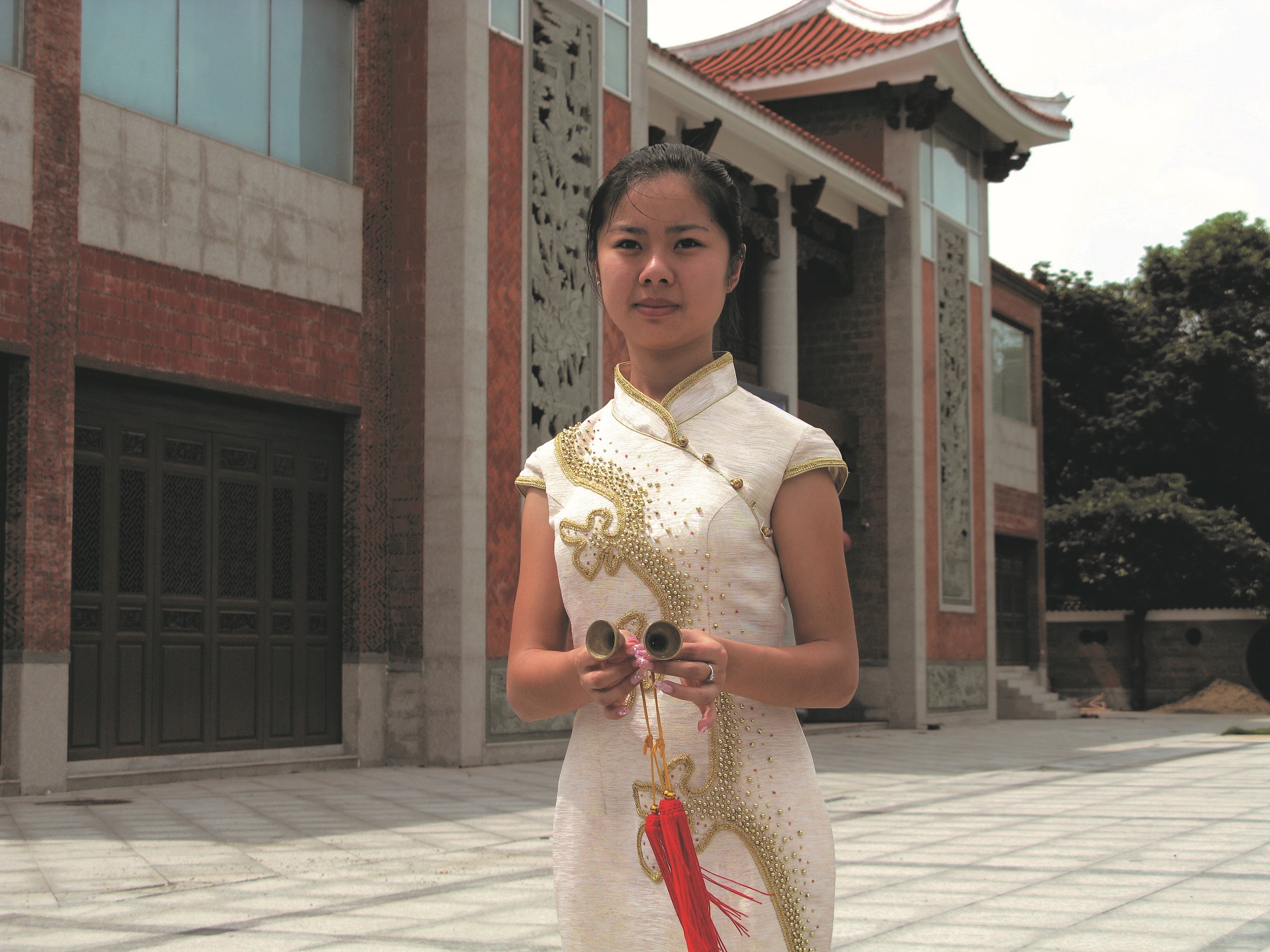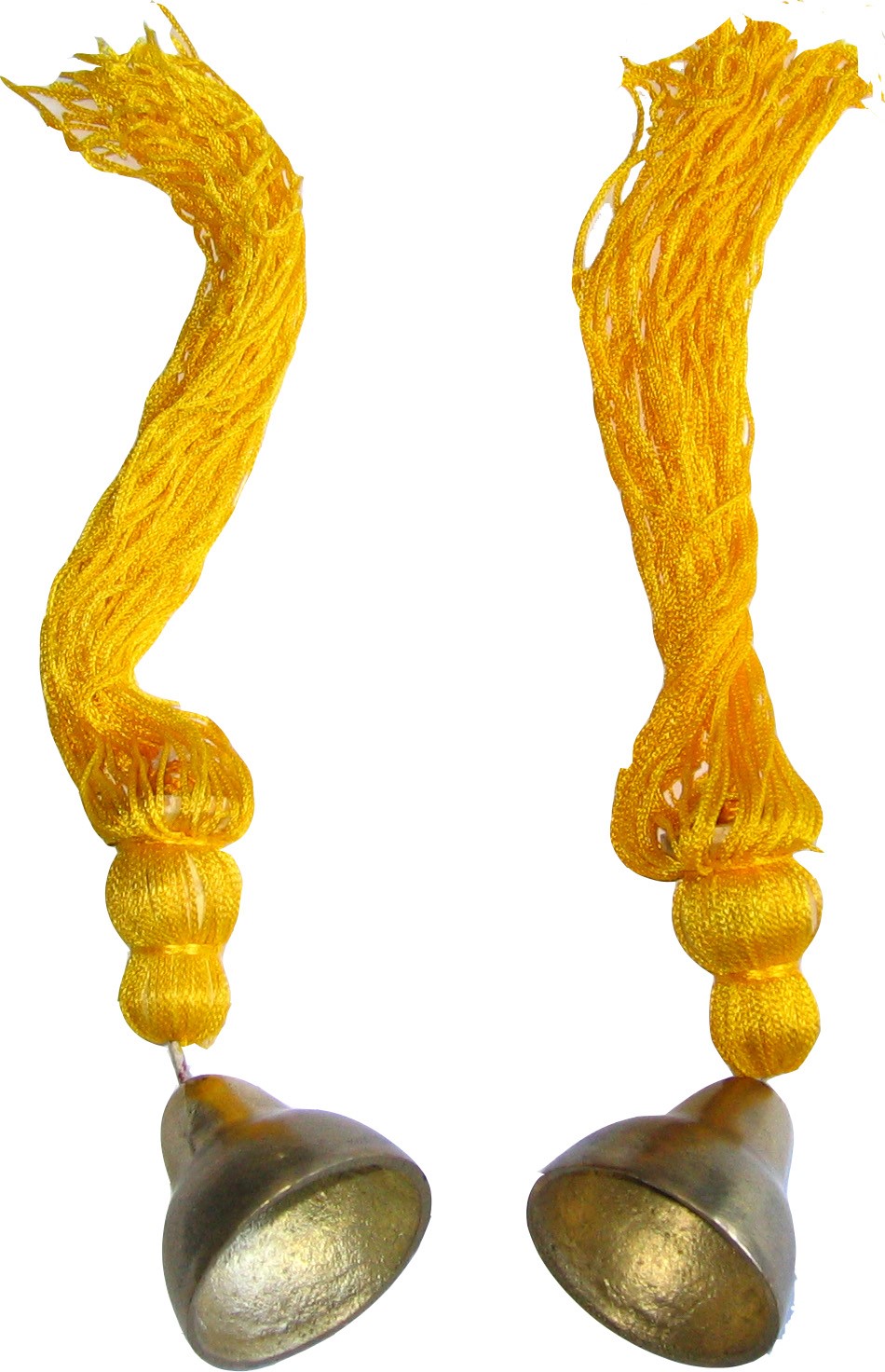南音(Nan Yin)
南音也称“弦管”“泉州南音”,福建省闽南地区的传统音乐。
南音有“中国音乐史上的活化石”之称,发源于福建泉州,用闽南语演唱,是中国历史悠久的汉族音乐。 两汉、晋、唐、两宋等朝代的中原移民把音乐文化带入以泉州为中心的闽南地区,并与当地民间音乐融合,形成了具有中原古乐遗韵的文化表现形式。 南音起源于唐,形成在宋,南音的唱法保留了唐以前传统古老的民族唱法,其唱、奏者的二度创作极富随意性,而南管的演奏上也保持在唐宋时期的特色。其音乐主要由“指”“谱”“曲”三大类组成,是中国古代音乐体系比较丰富、完整的一个大乐种。
2006年5月20日,经国务院批准列入第一批国家级非物质文化遗产名录。2009年9月30日在联合国教科文组织政府间组织大会上,南音正式列入人类非物质文化遗产代表作名录中。
Nanyin also known as "Xian Guan" (string
and wind music)and "Quanzhou Nanyin" is a
traditional music in southern Fujian province.
Nanyin, known as the "living fossil in China's music
history", originated in Quanzhou, Fujian, and sang in Minnan dialect. It
is the Han nationality music with a long history in China. The immigrants from the Central
Plains in the Han, Jin, Tang and Song dynasties brought the music culture into
the southern Fujian with Quanzhou as the center, and merged it with the local
folk music, forming a cultural expression with the lingering charm of the
ancient music of the Central Plains. Nanyin originated in the Tang
Dynasty and was formed in the Song Dynasty. Nanyin's singing method retained
the traditional and ancient national singing method before the Tang Dynasty,
and its singers and performers' second creations were very random, while
Nanguan's performance also maintained the characteristics of the Tang and Song
Dynasties. Music is mainly composed of three categories: "Zhi",
"Pu" and "Qu", which is a relatively rich and complete
music category in the ancient music system of China.
On May 20th, 2006, it was approved by the State Council to be listed in the first batch of national intangible cultural heritage. On September 30th, 2009, Nanyin was officially listed in the list of representative works of human intangible cultural heritage at the UNESCO Intergovernmental Organization Conference.
拍板(Clapper)
拍板是中国的传统乐器,因它大都用檀木制作,所以亦称为“檀板”。南音使用的拍板是由五块木片组成(见图1)。上下二片向外的一面削成半圆形。上面一块刻有“发皆中节”字样及篆印,下面的那块通常穿有彩穗。“拍板”击奏在“拍位”(强拍),演唱者手执拍板边唱边击,它仍然保留着汉相和歌“执节者歌”的表演形式(见图2),其持拿及击奏姿势,具有从容庄重、矜持雍容的古代贵族气派。
Clapper is a traditional musical instrument in China. Because it is mostly
made of sandalwood, it is also called "sandalwood board". The clapper
used by Nanyin is composed of five pieces of wood (see Figure 1). The outward
side of the upper and lower pieces is cut into a semicircle. The upper one is
engraved with the words "
Self-restraint " and the seal, while the lower one usually wears colored
tassels. 2. "clapper" percussion is in the "beat position"
(strong beat), and the singer holds clapper while singing and striking. It
still retains the performance form of the Han Dynasty——xianghe song “The singer's clappers correspond to the accompanying
orchestral instruments.”(see Figure 2), with its holding and percussion
posture, and it has the ancient aristocratic style of being calm, solemn,
reserved and graceful.
响盏(XiangZhan)
响盏(见图3)属于锣的一种,锣是中国古老且常见的民族乐器。泉州南音所使用的“响盏”号称为最小的锣,由于它体积较小,难以拿在手上演奏,所以就把它放置于竹子编织的竹箍中,以方便击打。演奏时左手持响盏箍,右手持响盏槌敲击(见图4),演奏方法基本上是随南音琵琶的弹奏指法击打,但是每逢拍位则要休止。
XiangZhan (see Figure 3) is a kind of gong, which is an ancient and common national musical instrument in China. The " XiangZhan " used in Quanzhou Nanyin is known as the smallest gong. Because of its small size, it is difficult to play in the hand, so it is placed in a bamboo hoop woven with bamboo to facilitate hitting. When playing, the left hand holds the XiangZhan and the right hand holds the gong hammer to knock (see Figure 4). The playing method is basically to hit with the fingering of Nanyin Pipa, but it has to stop every beat.
小叫(Xiao jiao)
小叫(见图5),也称为小叫铎,它实际上是两件乐器,即小叫锣和铎(木鱼),小叫锣和木鱼两件乐器由一人演奏,所以它们只按一件计算。“小叫铎”的独特之处在于用左手同时持拿“小叫锣”和“木鱼”,右手用木槌分别敲击(见图6)。铎为木制,它只敲击乐曲的拍位(强拍)。小叫锣敲击弱拍或弱位,敲击时要将它摔离手掌,方能发出正常的声音。小叫的演奏没有定谱,演奏者可根据乐曲的情绪自由发挥,但如逢琵琶撚指(滚)、贯声(时值三拍的长音)或乐曲旋律处于较低的音区时则要休止。小叫锣的击打有多种节奏型的变化,在演奏中可以灵活运用。
Xiao Jiao (see Figure 5), also known as Xiao Jiao Duo, is actually two musical instruments, namely Xiao Jiao Gong and Duo (temple block), which are played by one person, so they are only counted as one instrument. The uniqueness of "Xiao Jiao Duo" lies in holding both "Xiao Jiao Gong" and " temple block " with the left hand, and tapping them with a mallet with the right hand (see Figure 6). It is made of wood, and it only strikes the beat position (strong beat) of the music. The gong is called to strike the weak beat or weak position, and it should be dropped from the palm of your hand when striking, so that it can make a normal sound. There is no set score in the performance of a small call, and the performer can freely play it according to the mood of the music, but it should stop when the Pipa twists its fingers (rolling), makes a continuous sound (a long sound with a duration of three beats) or the melody of the music is in a lower tone zone. There are many rhythmical changes in the beating of gong, which can be used flexibly in performance.
四宝(Si bao)
“四宝”由四块带有竹皮的竹片制作而成(见图7)。四宝的演奏方法和琵琶指法基本相同,但可以略为加花。在“下四管”中它的演奏技巧难度最高。演奏时左右手各执两块(见图8),可两手互击,也可同一手两块相击,敲击的位置有多种变化,演奏者可灵活应用。如逢“拍位”,“四宝”应双手分别合击。“四宝”最有特色的演奏是“摇”,它是利用大臂的力量带动手腕将“四宝”摇动,产生细密而均匀的连续敲击声音,并要能够强弱变化自如。
The "Si bao" are made of four pieces of bamboo with bamboo skins (see Figure 7). The playing method of Sibao is basically the same as that of pipa fingering, but it can be slightly flowered. In the "lower four pipes", its playing skill is the most difficult. When playing, the left hand and the right hand hold two pieces (see Figure 8). You can hit each other with both hands, or you can hit two pieces with the same hand. There are many kinds of striking positions, so the player can apply them flexibly. In case of "shooting position", "Si bao" should strike with both hands respectively. The most distinctive performance of "Si bao" is "Shake", which uses the strength of the big arm to drive the wrist to shake the "Si bao" to produce a fine and uniform continuous tapping sound, and it should be able to change its strength freely.
双铃(Double bells)
双铃(见图9),也称双音、碰铃等,它属于“钟”的范畴,其声清远悠扬。“双铃”用铜铸成,手持的位置分别系有彩穗。在泉州南音中的几种金属打击乐器中,双铃的声音最为清逸。在演奏中虽然它只是随“撩位”(相当于次强拍)轻疏而击,却已使乐曲雅意盎然。由于双铃是金属乐器,基于“金木不同鸣”的原则,在演奏“叠拍”这种没有“撩位”的乐曲时,要用扁鼓来替换它。演奏时左右手各执一个(见图10),击打乐曲的撩位。
Double bells (see Figure 9), also known as double tones, ringing bells, etc., belong to the category of "bell", and its sound is clear and melodious. The "Double Bell" is made of copper, and its holding position is tied with colored spikes. Among several metal percussion instruments in Quanzhou Nanyin, the sound of Double Bell is the clearest. It belongs to the second strongest beat in performance. Make the music full of elegance and meaning. As the double bell is a metal instrument, based on the principle of " Metal musical instruments and wooden musical instruments cannot sound at the same time.", flat drums should be used to replace it when playing "overlapping beats". When playing, the left hand and the right hand each hold one stroke (see Figure 10).
扁鼓(Flat drum)
“扁鼓”属革类乐器。鼓身呈扁圆形,用木材制成,两面蒙以猪皮,鼓边装有一金属圈以方便手持(见图11)。敲击的“鼓筷”是用圆形的竹子制作。扁鼓通常作为双铃的替换乐器和响盏、小叫、四宝同时演奏。在演奏中它能起到调和各种打击乐器音色的作用。与其它几件打击乐器相比,扁鼓的音色较为低沉、温和,它和四宝一样具有良好的兼容性,所以在演奏“叠拍”乐曲的时候用它代替“无撩位可击”的双铃击打“拍位”,以保证“下四管”的完整。演奏时左手食指穿过鼓沿的金属圈,其它手指于鼓边将扁鼓持稳,右手执“鼓筷”点击(见图12)。
"Flat drum" is a leather musical instrument. The drum body is oblate, made of wood, covered with pigskin on both sides, and equipped with a metal ring at the side of the drum for easy holding (see Figure 11). The drumming chopsticks are made of round bamboo. Flat drum is usually used as a substitute instrument for double bell, and it is played at the same time with ring, bark and four treasures. It can play a role in harmonizing the timbres of various percussion instruments in performance. Compared with other percussion instruments, the flat drum has a deep and gentle tone, and it has good compatibility with the four treasures. When playing, the index finger of the left hand passes through the metal ring at the edge of the drum, the other fingers hold the flat drum by the edge of the drum, and the right hand holds the "drum chopsticks" and clicks (see Figure 12).
以上为部分品牌产品展示 ,具体请关注图中二维码
The following are some of the brand products show ,
please scan the QR code in the picture













